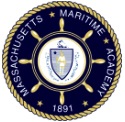OICNW-2-3A
Voyage planning
Function: Navigation at the operational level
| Competence | Knowledge, Understanding & Proficiency | Task |
|---|---|---|
|
Maintain a safe navigational watch |
A2.3 The use of routeing in accordance with the General Provisions on Ships’ Routeing |
Voyage planning |
Assessed in: MT-4253 Watchkeeping using Full-Mission Bridge Simulator
Condition
On a ship, a full mission ship simulator, or in a navigation laboratory, when given a port of departure and a port of arrival more than 500 miles apart.
Behavior
Plan a voyage and review the voyage plan with the master and deck officers.
Standard
Appraisal -- The candidate’s plan took into account paragraph 2 of the annex to IMO Assembly Resolution A 893(21):
- The condition of the vessel, its stability, equipment, operational limitations, draft and maneuvering characteristics;
- Any special characteristics of the cargo and its stowage;
- Crew members competency and rest status;
- The status of all ship’s certificates and documents were up to date;
- Up to date charts of proper scale, and the latest notices to mariners and radio navigational warnings;
- Up to date coast pilots, sailing directions, and other information sources appropriate for the voyage;
- Relevant routing guides;
- Up to date tide and current tables and atlases;
- Weather information;
- Weather routing services;
- Ship reporting systems, VTS and environmental protection measures;
- Vessel traffic density for the route;
- Pilotage requirements and information exchange; and,
- Port information, including emergency response capability.
Planning --The candidate’s plan contained the following in accordance with paragraph 3 of the annex to IMO Assembly Resolution A 893(21):
- Courses plotted on the appropriately scaled charts noting the ETA at each way point, including the final way point;
- Courses and distances between way points were correctly calculated and indicated on the charts;
- The most direct route that avoided all hazards to navigation by the margin of safety of three miles;
- The areas of all required speed changes;
- The minimum under keel clearances in critical areas; positions requiring a change of machinery status;
- Waypoint of all course changes;
- The methods and frequency of position fixing, including areas requiring the highest accuracy;
- The positions and radio hailing frequencies or channels where port authorities, pilots and VTS services must be notified were noted on the relevant chart;
- The state of the tide and currents at the port of departure for the times of departure and transit were determined;
- Contingency plan for alternative actions in cases of emergency;
- The review of the voyage plan with the Master and deck officers.
